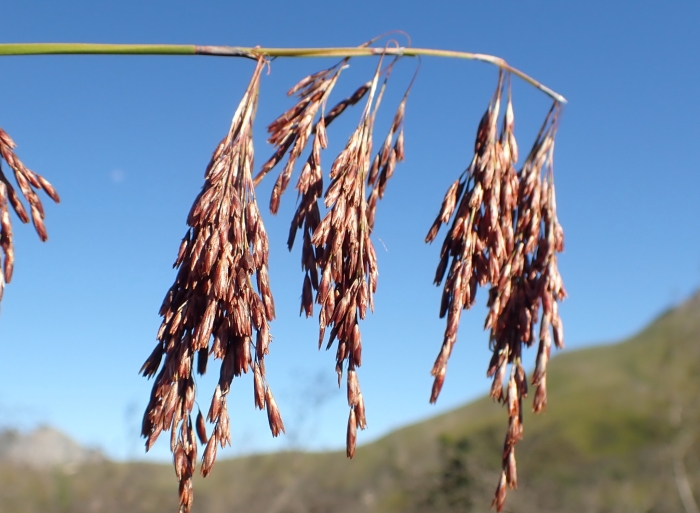Silver Reed
(Thamnochortus cinereus)
Silver Reed (Thamnochortus cinereus)
/
/

Di Turner
Public Domain
Image By:
Di Turner
Recorded By:
Copyright:
Public Domain
Copyright Notice:
Photo by: Di Turner | License Type: Public Domain | License URL: http://creativecommons.org/publicdomain/zero/1.0/ | Rights Holder: Di Turner | Publisher: iNaturalist | Date Created: 2021-05-01T09:35:54-07:00 |































Estimated Native Range
Summary
Thamnochortus cinereus, commonly known as Silver Reed, is an evergreen perennial grass native to the fynbos biome of the Western Cape in South Africa, where it thrives in open, sandy plains and on mountain slopes. It typically grows to a height of 2-3 feet (0.6-0.9 meters) and a width of 3-5 feet (0.9-1.5 meters). This grass is notable for its striking silvery inflorescences that appear in summer, adding a unique texture and color to the landscape. The plant forms dense tussocks of fine, needle-like foliage that remain attractive throughout the year.
Silver Reed is valued for its drought tolerance and ornamental inflorescences, which are often used in dried flower arrangements. It is suitable for mass planting in coastal gardens, rockeries, and as an accent plant in low-water landscapes. In cultivation, it requires full sun exposure to maintain its best form and color. While it can tolerate medium to high amounts of water, it is well adapted to dry conditions, making it a low-maintenance option for water-wise gardens. It prefers well-drained soils and can be sensitive to heavy, waterlogged substrates. There are no major disease or pest issues associated with Thamnochortus cinereus, but it may require protection from strong winds due to its delicate structure.CC BY-SA 4.0
Silver Reed is valued for its drought tolerance and ornamental inflorescences, which are often used in dried flower arrangements. It is suitable for mass planting in coastal gardens, rockeries, and as an accent plant in low-water landscapes. In cultivation, it requires full sun exposure to maintain its best form and color. While it can tolerate medium to high amounts of water, it is well adapted to dry conditions, making it a low-maintenance option for water-wise gardens. It prefers well-drained soils and can be sensitive to heavy, waterlogged substrates. There are no major disease or pest issues associated with Thamnochortus cinereus, but it may require protection from strong winds due to its delicate structure.CC BY-SA 4.0
Plant Description
- Plant Type: Grass
- Height: 2-3 feet
- Width: 3-5 feet
- Growth Rate: Moderate
- Flower Color: N/A
- Flowering Season: Spring
- Leaf Retention: Evergreen
Growth Requirements
- Sun: Full Sun
- Water: Medium, High
- Drainage: Medium
Common Uses
Border Plant, Erosion Control, Low Maintenance
Natural Habitat
Native to the fynbos biome of the Western Cape in South Africa
Other Names
Common Names: Silver Restio
Scientific Names: , Thamnochortus cinereus, Thamnochortus argenteus,
GBIF Accepted Name: Thamnochortus cinereus H.P.Linder